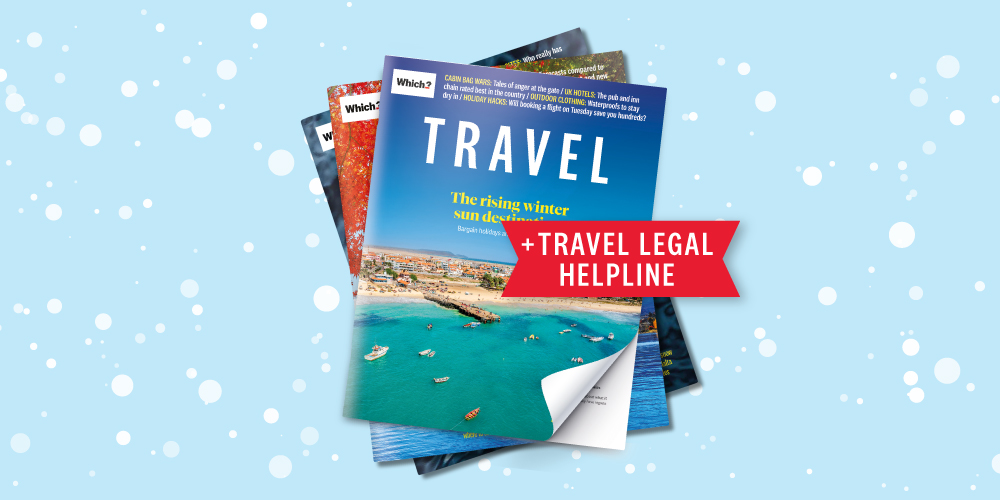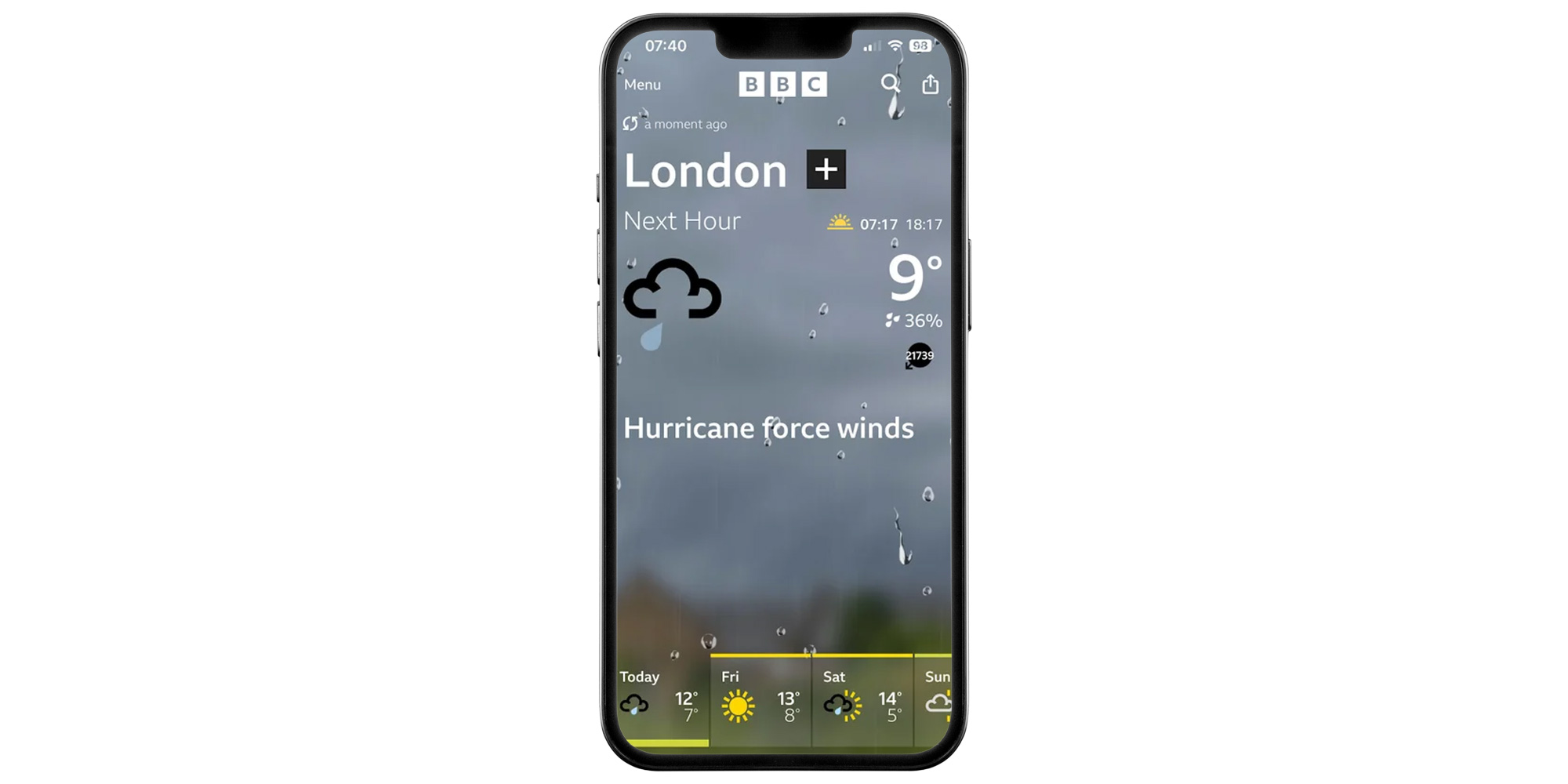
Get a year of super-useful advice
Who to book with, how to get the best deals plus inspiring destination ideas from the experts, for only £36.75 for the year – that’s 25% off.
Join Which? TravelOffer ends 8th January 2026

Weather services and apps are often under fire for getting the forecasts wrong – and, one time or another, we’ve all suffered the consequences.
To help you avoid getting caught in an unexpected deluge, Which? Travel has worked with the meteorologists at the University of Reading to measure the accuracy of some of the most popular weather forecast apps.
This article first appeared in full in the March edition of Which? Travel magazine

Who to book with, how to get the best deals plus inspiring destination ideas from the experts, for only £36.75 for the year – that’s 25% off.
Join Which? TravelOffer ends 8th January 2026
Get more travel inspiration, independent advice and unbiased recommendations you can trust from the experts with our Travel newsletter – it's free

Meteorologist Rosie Mammatt compared the forecasts of BBC Weather, the Met Office, AccuWeather, Apple Weather and The Weather Channel with the actual weather in two locations over a two-week period.
She found the BBC was, overall, the worst at accurately predicting the weather. Each service received a minus point every time the wrong symbol (a sun or rain cloud, for example) was assigned and for every degree the predicted temperature was out.
BBC Weather was especially poor at predicting the forecast for later the same day and overestimated the amount of rain due.
The most accurate app was The Weather Channel. It performed well when forecasting the weather in the next few hours (known as a nowcast) and was also strong at getting the weather right for later the same day. It offers free apps for both Android and Apple, and it’s available at weather.com.
According to experts at the University of Reading who put these apps to the test in 2025, the most accurate weather app is The Weather Channel. Second place was Accuweather, followed by Met Office.
| Most accurate daily forecaster |
|---|
| The Weather Channel |
| AccuWeather |
| Met Office |
| Apple Weather |
| BBC Weather |

The Reading University meteorology team are now conducting a bigger study of the two most popular weather apps in the UK: BBC Weather and the Met Office. Since October last year, they have been capturing live weather data from the atmospheric observatory in Reading and comparing it to the apps’ predictions for the same area.
Again, it shows apps overestimated the chance of rain, predicting it was more likely than not 17% of the time, on average – when it actually rained only 12% of the time. But BBC Weather was better at accurately predicting when it wouldn’t rain. Its forecasts for rain were more accurate than the Met Office 23% of the time.
The Met Office was better on temperature. Its predictions were often closer to the real temperature, especially for longer-range forecasts (two to six days in advance). For example, on a very chilly day in January, the Met Office was more accurate on temperature 25% of the time.
But while both services had their shortcomings, perhaps what is most surprising is just how accurate they are. Dr Rob Thompson of the University of Reading told us that today’s four-day forecast is as accurate as the 24-hour forecast was 30 years ago.
Millions of atmospheric observations are captured from satellites, balloons and weather stations every day. Those measurements of variables, such as temperature, pressure and wind speed, are plugged into sophisticated supercomputers, which run a simulation of what is likely to happen.
Predictions are based on forecasters’ understanding of the laws of physics and specific weather phenomena – which are more advanced than ever before. The reason we often get caught out is not the forecast, but the way in which the symbols and numbers displayed are open to misinterpretation.
See our pick of the best UK walks this winter for scenery, wildlife and peace and quiet

Along with using the most accurate weather app, it’s also important to make sure you’re reading the forecast correctly — especially when it comes to predicting rain.
It’s sometimes more useful to look beyond the symbols and emojis that weather apps use to summarise the weather of the day, and check the actual forecast, including the daily and hourly percentage chance of rain.
Some apps, including BBC Weather, show a single rain cloud icon for the day even when the chance of rain is 50% or less — i.e. the flip of a coin. But even if it doesn’t rain that day, the forecast was technically right because there was also a 50% chance it wouldn’t rain.
Instead of focusing on the emojis displayed on your app, you need to pay attention to the percentages displayed when you open up the full forecast in the app or online.
But even when checking the ‘rain percentage’, you might be mistaken as to what, exactly, this means. There’s a myth that it corresponds to the heaviness of the rain, or the area of land that will experience rain.
Take a forecast that shows ‘rain 30%’.
‘People sometimes misread this to mean it will rain over 30% of the area – or that, if it does rain, it will only be a light drizzle,’ Dr Thompson explains. ‘Neither of those is true. A 30% chance of rain means that there is a small chance – three times out of 10 – that it will rain, but seven times out of 10, it will stay dry. And that 30% could still mean a heavy downpour for the full length of time covered by the forecast, or a brief five-minute shower right at the end.’
In other words, the rain percentage is the chance of rain, during the time covered by the forecast (apps often show both the hourly and daily chance of rain).
Another common assumption is that a single forecast will apply to the whole region. Weather apps divide the country into a grid of squares, each covering an area as large as 200km. And if a downpour is forecast somewhere in that grid, a rain icon may inaccurately be assigned. That doesn’t mean it will rain where you are.
And rain, Dr Thompson says, is simply more unpredictable. Currently, the technology isn’t there to provide nowcasts for every postcode in the UK, although AI will eventually improve these predictions.
Be prepared for an unexpected downpour with our best waterproof jackets for 2025. And find out how to choose a waterproof jacket that won’t let you down

Jo Rhodes, Which? senior researcher & writer, says:
As the research shows, each app is better or worse at predicting different elements of the weather. That’s why it’s a good idea to compare several.
Weather is very location specific, so for the most accurate forecast, switch on your ‘precise location’ for the relevant app. Most apps will ask for this permission when you install them, or you can update their access to location data in the settings.
Watching a human forecaster, who will have some form of meteorological training, interpret the data in front of a map will give you a much better picture. An app can only provide a ‘yes or no’ prediction – and then it’s up to the user to translate the information they’ve been given.

Who to book with, how to get the best deals plus inspiring destination ideas from the experts, for only £36.75 for the year – that’s 25% off.
Join Which? TravelOffer ends 8th January 2026
Get more travel inspiration, independent advice and unbiased recommendations you can trust from the experts with our Travel newsletter – it's free